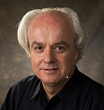
Baki Karaböce
Research scientist.
TÃœBÄ°TAK UME, National Metrology Institute of Turkey
Turkey
Biography
Baki Karaböce has completed his PhD in Yeditepe Univertsity in İstanbul in 2014. He is head of Medical Metrology Laboratory and Head of Medical Metrology Focus Group at National Metrology Institute of Turkey. He is member of EURAMET-The European Association of National Metrology Institutes, Task Group Health and Ultrasound subcommitte. He has published more than 30 papers in journals and has been serving as steering committe member of IEEE MeMeA-Medical Measurements and Applications Sympossium.
Research Interest
Metrological approach in medical measurements

Stergios Stergiopoulos
Associate Professor
Senior Scientist, DGSTCO, Toronto research Centre
Canada
Biography
Dr. Stergios Stergiopoulos received a B.Sc. (Hon.) degree from the University of Athens in 1976 and the M.Sc. & Ph.D. degrees in Physics in 1977 and 1982, respectively, from York University, Toronto, Canada. Presently he is the Acting Chief Scientist at the Defence R&D Canada (DRDC) Toronto, an Associate Professor (Status Only) at the Edward S. Rogers Sr. Department of Electrical & Computer Engineering of the University of Toronto, and the main innovator of the Defence R&D Canada (DRDC) medical diagnostic technologies and patents that have been licensed for commercialization. These innovation include a number of non-invasive 3D imaging (i.e. cardiac 3D CT, portable 3D/4D ultrasound) and vital signs monitoring (i.e., motion & noise tolerant automated blood pressure and intracranial dispersive-ultrasound) technologies. To complete their development and their commercialization process, Dr. Stergiopoulos raised approximately $21 million from private investors and Government grants. He has an extensive background in science and research. Since 1991 he is with DRDC, a Research Agency for the Canadian Department of National Defence. From 1988 to 1991, he was with the NATO SACLANT Centre in La Spezia, Italy, where he performed as Senior Scientist both theoretical and experimental research in sonar signal processing. At SACLANTCEN, he developed jointly with Dr. Sullivan from US Naval Underwater Warfare Centre (NUWC) an acoustic synthetic aperture technique that has been patented by the U.S. Navy. From 1984 to 1988 he developed an underwater fixed array surveillance system for the Hellenic Navy in Greece and there he was appointed also senior adviser to the Greek Minister of Defence. From 1982 to 1984 he worked as a research associate at York University and in collaboration with the U.S.Army Ballistic Research Lab (BRL), Aberdeen,MD, on projects related to the stability of liquid filled spin stabilized projectiles. In 1984 he was awarded a U.S. NRC Research Fellowship for BRL. He was Associate Editor for the IEEE Journal of Oceanic Engineering and for this Journal he has prepared two special issues on Acoustic Synthetic Aperture and Sonar System Technology. He has published numerous scientific articles and a Handbook (i.e. 2nd Edition, CRC-Press) in the areas of advanced signal processing for sonar and medical non-invasive system applications. His present interests are associated with the implementation of advanced processing schemes in multi-dimensional arrays of sensors for sonar and medical tomography (CT, MRI and ultrasound) systems. His research activities are supported by Canadian-DND Grants, NSERC Research & Strategic Grants, the Ontario Challenge Fund and NATO collaborative Research Grants. He has been awarded with European Commission-IST grants as technical manager of several projects that included as project partners major European corporations and Institutes (i.e., Siemens, Nucletron, Philips, Sema Group, Esaote, Atmel, Fraunhofer). These project were entitled “New Roentgenâ€, “MITTUGâ€, “ADUMSâ€, “MRI-MARCBâ€, “DUST†and Euroworkshop “Fourierâ€, with an average budget level of the order of Euro 1.5 million per project. Dr. Stergiopoulos is a Fellow of the Acoustical Society of America and a senior member of the IEEE. He has been a consultant to a number of companies, including Atlas Elektronik in Germany, Hellenic Arms Industry and Hellenic Aerospace Industry.
Research Interest
His present interests are associated with the implementation of advanced processing schemes in multi-dimensional arrays of sensors for sonar and medical tomography (CT, MRI and ultrasound) systems

Huabei Jiang
Professor
Department of Biomedical Engineering University of Florida
United States
Biography
Dr. Jiang has been trained in the area of biomedical optical imaging with significant experience with both complex inverse computations and experiments in biomedical contexts. He has made pioneering contributions to diffuse optical tomography, fluorescence tomography, bioluminescence tomography, and quantitative photoacoustic tomography.
Research Interest
Discovering and developing fundamentally new optical-based imaging technologies for in vivo visualization of tissue at both the macroscopic and microscopic scales












